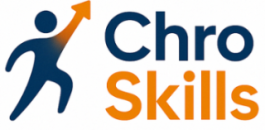
Understanding the Role of a Chief Human Resources Officer
Grasping the Multifaceted Role
A Chief Human Resources Officer (CHRO) occupies a pivotal position within organizations, acting as a bridge between an organization's employee needs and its strategic vision. As an enabler of business success, their role encompasses a wide range of responsibilities from talent management to workforce planning and employee engagement. Understanding these diverse facets is essential for a CHRO to effectively drive a data-driven culture and foster transformation.
Organizations looking to succeed in the ever-evolving business landscape rely on their CHRO to align the workforce strategies with overarching organizational goals. This alignment requires a comprehensive understanding of human capital management systems, including technology such as cloud-based solutions and platforms like SAP SuccessFactors, which enable streamlined processes and enhanced decision making.
Moreover, a CHRO must exhibit the ability to leverage workforce analytics to gain insights into employee experience and talent acquisition processes. By doing so, they help steer strategic decisions that elevate organizational success. This involves not only analyzing data but also synthesizing insights to craft strategies that encourage continuous organizational learning and adaptation.
The CHRO's involvement extends to nurturing a culture of performance management and promoting a paper-free work environment. By integrating effective technology and transformation strategies, they play a key role in preparing organizations for future challenges. Success thus hinges on their ability to weave these elements into a cohesive framework that encourages both organizational and employee growth. For those interested in exploring career opportunities in roles similar to a CHRO, you can find more information here.
Strategic Leadership and Vision
Strategic Leadership: A Pillar of Success
In the rapidly evolving landscape of human resources, the ability to provide clear and strategic leadership has become an indispensable skill for Chief Human Resources Officers (CHROs). When we examine what the role entails, it's evident that strategic thinking is at its core, guiding organizations toward sustainable success by aligning human resources practices with the overall business objectives.
CHROs are tasked with understanding the intricate dynamics of the workforce and translating these insights into actionable strategies. Harnessing comprehensive workforce analytics and employing cloud-based management systems allows them to spearhead initiatives that boost employee experience and organizational efficiency. Furthermore, the strategic use of data-driven insights can significantly influence key areas such as talent management and employee engagement.
It's crucial for CHROs to not only develop these strategies but also to effectively communicate the vision and goals across all levels of the organization, ensuring that every employee understands their role in driving the business forward. The integration of emerging technologies like SAP SuccessFactors offers invaluable support in executing these plans and monitoring their effectiveness, thereby translating strategic visions into tangible outcomes.
The role of strategic leadership within human resources extends beyond simple planning. CHROs must adeptly navigate transformations within the organization, preparing for upcoming changes and ensuring workforce readiness through continuous organizational learning and development. By fostering a culture that embraces innovation and adaptability, they can cultivate a resilient organization capable of facing future challenges.
In essence, the hallmark of an effective CHRO is their ability to blend strategic foresight with agile execution, transforming human capital into a decisive enabler of business success.
Communication and Interpersonal Skills
Mastering the Art of Communication and Interpersonal Skills
In an era where businesses are rapidly transforming, the role of a Chief Human Resources Officer (CHRO) is more pivotal than ever. A CHRO must be a strategic thinker, able to effectively engage with a diverse workforce while adapting to the innovative shifts in technology and organizational dynamics. A key element to achieving success in this role is through exceptional communication and interpersonal skills. Here are several factors that underscore the importance of these skills:- Cultivating Engagement and Understanding: CHROs need to foster an environment where open communication thrives. This involves active listening and articulating ideas clearly, ensuring that all employees understand organizational strategies and changes. Such efforts can enhance employee engagement and improve the overall employee experience.
- Collaboration Across Departments: Working closely with other strategic leaders, particularly during talent acquisition and change management initiatives, demands unparalleled communication skills. Whether it’s orchestrating workforce planning or rolling out new cloud-based management systems like SAP SuccessFactors, effective communication can be a determinant of success.
- Handling Difficult Conversations with Ease: Whether dealing with performance management or exploring talent management strategies, CHROs often face challenging discussions. Through maintaining a professional tone and empathetic understanding, they can turn potential conflicts into opportunities for growth and learning.
- Adaptability to Technological Advancements: Cloud-based technologies and workforce analytics necessitate that HR leaders remain abreast of new communication tools and platforms. Embracing a data-driven approach to leadership can enable CHROs to better articulate organizational changes and the reasoning behind strategic decisions.
- Encouraging a People-First Culture: The success of many businesses hinges on strong human capital. By harnessing effective communication, CHROs play a crucial role in promoting a culture of innovation and learning. Encouraging feedback and celebrating successes help in organizational transformation and establish trust.
Change Management Expertise
Expertise in Leading Transformations
The dynamic nature of today's business landscape requires organizations to be adaptable and agile. A Chief Human Resources Officer (CHRO) must possess a deep understanding of change management expertise to effectively lead organizations through these transformations. The success of any strategic change initiative relies heavily on the CHRO's ability to guide both employees and management teams through potentially turbulent shifts. This entails a solid grasp of change strategies, as well as the dexterity to harness emerging technologies such as cloud-based solutions and workforce analytics.
Successful change management involves more than just implementation; it demands a strategic approach to stakeholder engagement and talent management. Key enablers include effective communication channels and robust performance management systems to ensure the workforce remains motivated and aligned with organizational goals. Employee experience plays a critical role here, as fostering a positive environment can significantly ease transitions.
A CHRO's capacity to leverage data-driven insights is paramount in understanding the impact of change initiatives. By utilizing workforce analytics and talent acquisition data—often derived from platforms like sap successfactors—CHROs can make informed decisions to support transition phases. Furthermore, employing holistic strategies that incorporate white papers and detailed organizational assessments can provide valuable direction for change management efforts.
The journey towards creating a paper-free, streamlined process is no longer optional but a necessity. As such, the proficiency of a CHRO in navigating these complex scenarios not only marks their development but also solidifies their role as pivotal change enablers within their organizations.
Data-Driven Decision Making
Embracing Data-Driven Approaches for Informed Decisions
In the evolving landscape of human resources, the role of a Chief Human Resources Officer (CHRO) is increasingly intertwined with strategic data-driven decision-making. Organizations today are leveraging technology to transform their HR practices, making it essential for CHROs to harness data analytics as a core enabler of success. One of the key elements of this transition is the adoption of cloud-based systems, like SAP SuccessFactors, which allow for robust workforce analytics and performance management. These tools provide CHROs with valuable insights into talent acquisition, allowing for more effective workforce planning and ensuring the alignment of HR strategies with business goals. To navigate this data-rich environment, CHROs must cultivate a strong understanding of workforce data. This involves analyzing trends, identifying success factors, and implementing strategies that drive employee engagement and elevate the overall employee experience. Harnessing analytics not only aids in strategic decision-making but also facilitates the transformation from traditional paper-heavy processes to more agile, paper-free solutions. Moreover, by utilizing data-driven insights, CHROs can lead their organizations in building a culture of continuous learning and innovation. This includes investing in learning technologies and cloud-based solutions that support organizational transformation and foster human capital development. By aligning these elements, CHROs can enhance both organizational performance and employee satisfaction, reinforcing their role as strategic leaders within their companies.Building a Culture of Innovation
Creating an Environment for Innovation
In today's fast-paced business world, staying competitive requires organizations to foster a culture of innovation. For a Chief Human Resources Officer (CHRO), this means proactively cultivating an environment that encourages new ideas and embraces change. Such an environment not only enhances employee engagement but also serves as a vital enabler for organizational transformation. To succeed in building a culture of innovation, a CHRO should focus on the following aspects:- Strategic Workforce Management: Implementing workforce planning strategies that align with business objectives ensures that talent acquisition and talent management are positioned to drive success. Leveraging data-driven insights, such as those gained from workforce analytics tools like SAP SuccessFactors, allows HR leaders to make informed decisions that promote innovation.
- Adapting to Technology: Embracing technology is essential for fostering an innovative culture. This includes transitioning to cloud-based HR management systems that streamline processes and support a paper-free work environment. As employees adopt new technologies, they gain access to vital resources and learning opportunities that spur creativity.
- Promoting a Learning Culture: Continuous learning and development are key to innovation. By investing in employee experience and providing access to learning platforms, organizations can ensure their workforce remains adaptable and skilled. A strong emphasis on development encourages employees to think creatively and apply newfound knowledge to organizational challenges.
- Encouraging Open Communication: Transparent and effective communication channels are crucial for fostering innovation. This involves creating spaces where employees feel empowered to share their ideas and contribute to organizational growth. A CHRO must prioritize open dialogue to inspire collaboration and continuous improvement.
- Leveraging Change Management: Success in fostering innovation often requires a strong expertise in change management. By understanding enablers of change, HR leaders can effectively guide employees through transformation initiatives, ensuring seamless integration and adoption of new strategies that drive business success.













